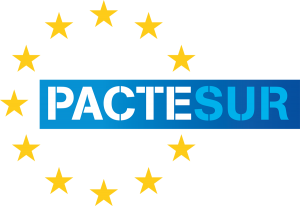A specialist in street art based in Liège (BE), Michaël Nicolaï* is part of the group of experts of the PACTESUR project on the protection of public spaces, where he brings his knowledge on the impact of street art on local residents’ feelings of security.
Street art to promote cities

The integration of culture and arts in urban public spaces plays an important part in shaping a city’s image and identity. Through art interventions, we question the values of a city, a region and of society.
Street art refers to art performed in public spaces such as mural painting, collage, mosaics and stencil painting. It is closely linked to contemporary art.
This sometimes ephemeral production is created by artists, some of whom are internationally renowned, who go from city to city and produce sometimes monumental artworks, which are then massively shared on social media. These artists adapt easily to conditions on the ground and to our cities’ constant mutations.

The penetration of street art in our cities highlights the value of outdoor spaces for social life. It also enhances community cohesion and improves local tourism. Street art opens new avenues for exchange and integration between neighbourhoods, cities, regions and countries.
An increasing number of cities thus consider it as a useful and relevant means to boost their attractiveness and improve their image. Because it is immediate, accessible and free, street art democratises culture by taking it to the streets. It also has a feel good effect on local residents.
A mural brings new life to a neighbourhood
In the spring of 2002, the City of Liège commissioned the non-profit association
Spray Can Arts a mural on a derelict plot of land situated in the heart of a densely populated neighbourhood. There used to be dilapidated houses and barracks in this large piece of land sitting right in the middle of an urban centre, up until the buildings were torn down and the plot used as temporary parking lot. Next to the plot was a group of houses, with a 40 m-long and 10 m-high metal fence in between. There was a lot of fly-tipping in there, as well as graffiti on the metallic fence.

Commissioned by the City Council, we created a monumental fresco of a light, cheerful scene representing a girl reading a book. A few weeks after it was completed, some of the charities operating in the neighbourhood told us the local residents were grateful. They told us local residents and passers-by felt safer and that fly tipping had significantly decreased. The residents had appropriated the mural, which had become a rallying point for the neighbourhood.
This artwork was on display for free for seven years. It invited passers-by to experiment art and contributed to democratising culture.
Rethinking public spaces’ visual design
As our cities are faced with the challenge of increasing the security of public spaces, it seems to me that cooperation between the different actors involved is key. Specialists in security, architects, associations, urban planners and artists must work in a coordinated manner with cities to create secure and peaceful public spaces.
Merely putting some ‘make-up’ on temporary security equipment that is heavy and highly visible is certainly not a solution. We need concerted action at each phase of a city’s renovation and transformation.

Cooperation is also key for creativity, as it enables artists and professionals to meet, compare their ideas, have a conversation and share ideas and needs. It is thus a major source of inspiration. Such collaboration will result in an artwork that has meaning in the urban space, each participating organisation contributing to the collaborative project by bringing their specific know-how.
It seems to me that rethinking and reflecting on public spaces’ visual design is vital in order to increase local residents’ feeling of security. The challenge today is to further develop our positive vision of a space that is shared by numerous actors.
* Michaël Nicolaï is Director of the Spray Can Arts association of Liège (BE), whose purpose is to promote all types of street art. He also manages Paliss’Art, a public art scheme initiated by the City of Liège that has already delivered more than 70 artworks. Michaël Nicolaï is also Artistic Director of Galerie Central in Liège.
About PACTESUR

The PACTESUR project aims to empower cities and local actors in the field of security of urban public spaces facing threats, such as terrorist attacks. Through a bottom-up approach, the project gathers local decision makers, security forces, urban security experts, urban planners, IT developers, trainers, front-line practitioners, designers and others in order to shape new European local policies to secure public spaces against terrorist attacks.
About the PUBLICATION SERIES

A partner in the PACTESUR project, Efus is publishing a series of articles written by the project’s Associated Cities and Expert Advisory Committee, with the aim of contributing to the European debate on the protection of public spaces against threats. Because the security challenges affecting public spaces are in constant evolution, this collection intends to be a space for reflection and discussion on these issues.
Contact:
Tatiana Morales, Programme Manager: morales@efus.eu
Martí Navarro Regàs, Programme Manager: navarroregas@efus.eu
Marta Pellón Brussosa, Programme Manager: pellonbrussosa@efus.eu




